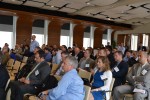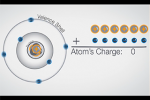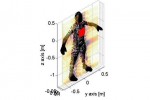News & Events
Innovation Fast Track
ADSA16 Presentations Now Available June 20, 2017

We are pleased to announce that the presentations from The Sixteenth Advanced Development for Security Applications Workshop (ADSA16) which was held on May 2-3, 2017 at Northeastern University in Boston, MA are now available for download.
The title of the workshop was, “Addressing the Requirement for Different Stakeholders in Transportation Security.” View all slides, as well as the reports from past ADSA workshops here.
If you have any questions regarding the topics and technologies discussed at the workshop, please contact ALERT at [email protected].
ADSA16: Bringing Transportation Security Stakeholders Together May 30, 2017

The Sixteenth Advanced Development for Security Applications (ADSA16) Workshop was held on May 2-3, 2017 at Northeastern University in Boston with 160 participants in attendance. The theme for the workshop was “Addressing the Requirements for Different Stakeholders in Transportation Security,” which explored the stakeholder perspectives of the Transportation Security Administration (TSA), airlines, vendors, passengers, academia, and national labs.
Some of the topics discussed at ADSA16 were methods and technologies to optimize airport security checkpoints; emerging technologies; explosives trace detection; deep learning; and techniques and strategies for securing soft targets (malls, arenas, outdoor events).
ADSA16 was unique from previous workshops, because it included the involvement of airline representatives from Alaska Airlines and Jet Blue, who discussed the importance of forming partnerships with aviation security stakeholders during an insightful panel discussion.
The ADSA Workshop series has been convened by the DHS Center of Excellence (COE) for Awareness and Localization of Explosives-Related Threats (ALERT) since 2009. Originally named the “Algorithm Development for Security Applications” Workshop series, the name was changed following ADSA10 in 2014 to reflect how the scope of the workshop series has expanded well beyond algorithms. The ADSA Workshop series is intended to address research opportunities that may enable the development of next-generation systems and to facilitate collaboration and innovation between researchers from academia, national labs, and industry.
The next ADSA Workshop (ADSA17) will be held at the same location on October 17-18, 2017 with the theme “Systems Engineering of Aviation Security Systems.” Specific topics that will be addressed include requirement specifications for systems and subsystems; the acquisition and use of metadata; assessment, management, and use of risk; and layered security. ADSA17 is expected to continue to draw interested and engaged communities from the Homeland Security Enterprise.
For more information about the upcoming ADSA17, please visit the ADSA17 information page. To read up on previous ADSA Workshops, check out ALERT’s collection of final reports.
Check Out Our Latest ALERT 101 Video March 31, 2017

ALERT 101: The Basics – Atoms and Molecules
The prequel to ALERT 101 – Methods of Chemical Characterization and Mitigation, ALERT 101 – The Basics: Atoms and Molecules, provides an introduction to atoms and molecules. This video describes the structure of atoms, basic behaviors and properties of atoms, and how atoms bond to form molecules. Different methods of molecule identification are also discussed.
For users without YouTube access: ALERT 101 – The Basics: Atoms and Molecules
Inspired by the success of TED (www.ted.com) and other educational media forums, ALERT has developed the ALERT 101 video series. Each video short features different technologies and research areas that the ALERT Center engages in. We hope that these productions help educate and inform the global community on these topics in an accessible and enjoyable way
This material is based upon work supported by the U.S. Department of Homeland Security, Science and Technology Directorate, Office of University Programs, under Grant Award 2013-ST-061-ED0001. The views and conclusions contained in this video are those of the authors and should not be interpreted as necessarily representing the official policies, either expressed or implied, of the U.S. Department of Homeland Security.
Professor Steve Beaudoin Awarded “Best Presentation” for ALERT Research at Annual AIChe Meeting March 6, 2017
ALERT researcher, Professor Steve Beaudoin of Purdue University was awarded “Best Presentation” in his session for a paper he presented on at the Annual AlChE Meeting in November 2016. The paper was based on his research project that was recently selected as a new ALERT project. The new project, titled “A Novel Method for Evaluating the Adhesion of Explosives Residue,” aims to provide insight into the reasons why explosives residues stick to surfaces and what must be done to effectively detect those residues in air transportation security environments.
The ultimate outcomes of this project include a library documenting the adhesion characteristics of explosives residues of interest against surfaces of interest, coupled with a spreadsheet that will allow members of the community to calculate adhesion forces between explosives and surfaces of interest. The end-users of the information developed by this project will include members of the Homeland Security community who are engaged with developing apparatuses, materials (swabs), and methods for contact sampling. Specifically, this research will help them to interpret the results of their developmental work and to guide the creation of next-generation materials and methods for detecting explosives residues.
Professor Beaudoin will be presenting the outcomes of this research thus far at the annual Trace Explosives Detection (TED) Workshop in April, 2017. This presentation will include all of the data collected, as well as a tutorial that illustrates how members of the Homeland Security community can use the data to calculate adhesion forces.
Professor Jose Martinez-Lorenzo Awarded $500K NSF CAREER Award March 6, 2017

ALERT Thrust R3 Project Investigator, Professor Jose Martinez-Lorenzo of Northeastern University was recently awarded a $500K National Science Foundation (NSF) CAREER Award for his work on developing a method for “4D mm-Wave Compressive Sensing and Imaging at One Thousand Volumetric Frames per Second.” Millimeter-wave sensing and imaging systems are generally used for a wide range of applications, such as security monitoring to detect potential threats at the airport and biological imaging for wound diagnosis and healing. Because this is the first four-dimensional millimeter-wave imaging system that can operate in quick-changing scenarios, it will benefit society greatly.
One of the main applications of this system is finding security threats hidden under clothing, inside backpacks, or in public spaces, such as sports arenas. The system can scan multiple people within 26 cubic meters and produce 1000 3D image frames per second. This far surpasses existing millimeter-wave sensing and imaging systems.
Despite the efficiency of this system, there are still some challenges to overcome. This project will look to address these challenges and ideally, the results of this research will establish the scientific basis for the proposed new sensing and imaging systems, by enhancing the imaging performance, reliability, and efficiency while reducing the hardware complexity, overall cost, and energy consumption of the system.
Additionally, Professor Martinez-Lorenzo will develop an educational program that combines classroom learning with research training methods to help students understand the principles and limitations of wave-based imaging. This educational program will also collaborate with the Northeastern University Cooperative Education and Career Development Program to transition students into industry and the Northeastern University Center for STEM Education to provide valuable research experiences for K-12, undergraduate, and underrepresented students, as well as education through online materials and public venues.
ALERT’s Methods to Improve the Detection of Hidden Explosives Wins Patent March 3, 2017

ALERT researchers, Prof. Carey Rappaport and Prof. Jose Martinez-Lorenzo of Northeastern University were awarded a patent for “Signal Processing Methods and Systems for Explosives Detection and Identification Using Electromagnetic Radiation” (U.S. Patent 9,575,045) on February 21, 2017.
This patent is for an algorithm designed to rule out non-explosive concealed foreign objects affixed to the skin (i.e. hidden under clothing). Current security screening systems, such as AIT Millimeter Wave Scanners used at airports to scan passengers, are able to identify items with distinct shapes that are hidden on the body, such as guns and knives. However, explosives are considerably more difficult to identify in this manner, due to the fact that the size and shape of explosives can vary greatly, leading to time-consuming and potentially dangerous security pat-downs to determine if a suspicious object is a security threat, or a wallet that a passenger forgot to place in the bin.
Prof. Rappaport and Prof. Martinez-Lorenzo believe their algorithm, when plugged into existing screening systems, will greatly reduce the number of false alarms, and thus, the number of pat-downs needed, leading to greater accuracy in threat detection and shorter security lines. The improved reliability would benefit many: passengers, airlines, and the Transportation Security Administration; and possibly lead to the expansion of AIT Millimeter Wave Scanners into everyday use, such as railway stations, sporting venues, and other soft targets.
Image caption: Simulation of a human form with explosives slab affixed to chest.
ALERT Welcomes Newest Industrial Member, Analog Devices, Inc. November 1, 2016

ALERT is pleased to announce its newest industrial member, Analog Devices, Inc. (ADI). ADI is a leading designer and manufacturer of high-performance analog and microwave integrated circuits and complete integrated solutions. For more than 50 years, ADI has been at the forefront of innovation in the area of sensing and signal processing for commercial as well as Aerospace and Defense applications. Analog Devices has Massachusetts design centers in Wilmington, Chelmsford, and Norwood. ALERT welcomes Analog Devices, Inc. into our community and is looking forward to a long-standing strategic partnership.
Analog Devices’ Aerospace and Defense division joined ALERT’s Industrial Advisory Board (IAB) in the third quarter of 2016. ADI is interested in collaborating with ALERT faculty on millimeter-wave imaging, signal processing, CT imaging, and stand-off trace explosives detection. Mr. Bryan Goldstein, General Manager of ADI’s Aerospace and Defense division, will be presenting an overview of their company at ALERT’s annual IAB Meeting on Monday, November 14, 2016.
The keynote address for this year’s IAB Meeting will be given by George Naccara, Federal Security Director for the Transportation Administration (TSA) under the Department of Homeland Security at Logan International Airport.
ALERT’s annual IAB Meeting, and other members-only events give industrial members the opportunity to network with other members, faculty from ALERT’s partner institutions, and local, state, and federal representatives. Other advantages of ALERT industrial membership include admission to the Annual Student Pipeline Industry Roundtable Event (ASPIRE), providing industrial members with access to qualified job-seeking students; the opportunity to request targeted research in an area of interest to their organizations; and waivers of ALERT workshop registration fees. For more advantages of ALERT industrial membership, please see the Benefits of Collaboration, or contact our Industrial and Government Liaison Officer, Ms. Emel Bulat at [email protected].
Photo Caption: ALERT researcher, Prof. Carey Rappaport of Northeastern University presents at a previous IAB Meeting. The annual IAB Meeting brings industrial members together with faculty, as well as local, state, and federal representatives.
ADSA14 Presentations Now Available October 31, 2016
We are pleased to announce that the ADSA14 Workshop presentations are now available for download. View all slides, as well as the reports from past ADSA workshops here.
If you have any questions regarding the topics and technologies discussed at the workshop, please contact Carl Crawford at [email protected].
ALERT Phase 2 Year 3 Annual Report Available Online! September 30, 2016

ALERT is proud to announce that the Phase 2 Year 3 Annual Report is now available for download online. This report details the continued research in ALERT’s four thrusts:
- R1 Characterization & Elimination of Illicit Explosives
- R2 Trace & Vapor Sensors
- R3 Bulk Sensors & Sensor Systems
- R4 Video Analytics & Signature Analysis
A full bibliography of publications and presentations conducted under ALERT support follows the individual project reports. Comprehensive descriptions of the Year 3 activities that took place in our Research and Transition, Education, Strategic Studies, Safety, and Information Protection Programs, as well as the ALERT Phase 2 Overview and Year 3 Highlights, Infrastructure and Evaluation, and Industrial/Practitioner and Government Partnerships can also be accessed in the Annual Report.
DHS S&T to Conduct Virtual Facebook Town Hall to Improve Industry Partnerships September 23, 2016
On September 27, from 1-2 p.m. ET, DHS S&T Office of Public-Private Partnerships invites you to join in a Facebook virtual town hall. The purpose of the meeting is to discuss how S&T collaborates with industry, and is an opportunity to provide S&T with feedback on how to improve partnerships and engagement efforts to make it easier and more efficient to work with DHS:
“The S&T Office of Public-Private Partnerships is dedicated to redefining the way S&T does business with industry innovators to find more effective and novel ways to research, develop, and transition new technologies for our customers within the HSE. We know we cannot do this alone, so we’re looking for input on ways we can improve our outreach to ensure that we clearly communicate high-priority needs and requirements. We also welcome feedback on our existing opportunities and tools for traditional and non-traditional partners as we engage with them to discover, connect, develop, and transition technologies”
For more information on the event, visit the official event page.

